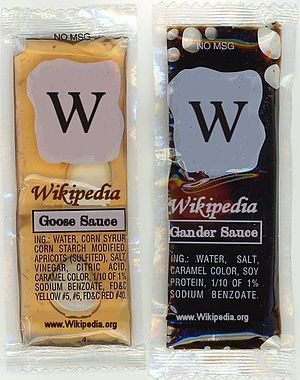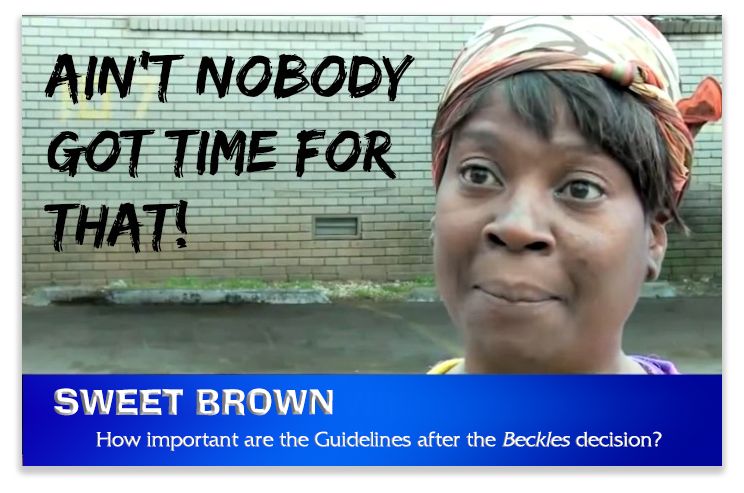We post news and comment on federal criminal justice issues, focused primarily on trial and post-conviction matters, legislative initiatives, and sentencing issues.
SUPREME COURT FURTHER MUDDLES GUIDELINES
In a decision long awaited by federal inmates, the Supreme Court yesterday held that unlike criminal statutes, the federal sentencing guidelines can never be void for vagueness. But in so ruling, the Court may have weakened the guidelines rather than strengthened them.
 The history: In 2015, the Supreme Court ruled in Johnson v. United States that a part of the definition of “crime of violence” found in the Armed Career Criminal Act – the “residual clause” that swept up offenses with a significant chance that someone might get hurt as being violent – was unconstitutionally vague. That ruling made sense: crimes such as drunk driving and not stopping for the police were being called “violent,” and on the strength of such dubious definitions, the law was making 51-month sentences into 15-year bits.
The history: In 2015, the Supreme Court ruled in Johnson v. United States that a part of the definition of “crime of violence” found in the Armed Career Criminal Act – the “residual clause” that swept up offenses with a significant chance that someone might get hurt as being violent – was unconstitutionally vague. That ruling made sense: crimes such as drunk driving and not stopping for the police were being called “violent,” and on the strength of such dubious definitions, the law was making 51-month sentences into 15-year bits.
Unfortunately, the definition of “crime of violence” (along with the “residual clause”) was not just an ACCA provision. Instead, the same definition had metastasized throughout the criminal code and guidelines. Under the legal principle that quid est ius gander anserem condimentum (“what’s sauce for the goose is sauce for the gander”), inmates whose sentences had been shot into low-earth orbit by the guidelines’ “career offender” provision immediately began arguing that their sentences were based on an unconstitutionally vague “residual clause” as well.
 The United States Sentencing Commission lent some support to the argument. After Johnson, the Commission changed the guidelines’ “crime of violence” definition to comport with Johnson. But a few courts of appeal held that guidelines are different from statutes, and could never be void for vagueness.
The United States Sentencing Commission lent some support to the argument. After Johnson, the Commission changed the guidelines’ “crime of violence” definition to comport with Johnson. But a few courts of appeal held that guidelines are different from statutes, and could never be void for vagueness.
Yesterday’s Decision: Beckles v. United States was such a case. Travis Beckles had been sentenced to double prison time for possessing a sawed-off shotgun under the “career offender” guideline. If the ACCA “crime of violence” definition was unintelligible, Travis argued, so was the guidelines definition that matched it word for word.
Yesterday, the Supreme Court disagreed. Because guidelines are merely advisory and judges hold the final authority on sentences, the Court held, defendants cannot successfully argue that a sentencing guideline is so vaguely worded as to violate the constitutional right to due process. Laws that “fix” the sentencing range can be challenged in ways that “advisory guidelines” simply cannot.
The Fallout: Beckles hobbles what has up to now been a well-honed defense tool, while exposing contradictions between the guidelines in theory and in practice in a way that almost guarantees further litigation.

One former federal prosecutor notes, “Saying those guidelines can’t be challenged for vagueness takes away a tool for review and puts the onus on the Sentencing Commission to keep going back and looking at how they are being applied.”
Up to 2005, judges had been required by law to apply the Guidelines in sentencing. But in United States v. Booker, the Supreme Court decided mandatory guidelines the Sentencing Reform Act of 1984 created were unconstitutional. Instead of throwing the whole law out, the court decided the guidelines should be considered advisory.
The broad opinion Justice Clarence Thomas wrote in Beckles built on Booker, differentiates between sentencing provisions in laws like the ACCA and the guidelines, which are subject to district courts’ discretion.
A former associate deputy attorney general who is now a law professor said the Beckles decision is a symptom of the hybrid situation that flowed from Booker: “You live in this weird world where the guidelines are both advisory and highly influential.”
Justice Sonia Sotomayor concurred in Beckles with a scathing rejection of the majority’s reasoning. She argued that while the guidelines may be “advisory” in name, in practice judges often consider them a default, meaning they should get the same treatment as a law under the constitution. Ironically, this is the same argument that helped carry the day in a 2011 decision, Peugh v. United States, which held the guidelines could be subject to an ex post facto analysis.
Sotomayor argued that Booker tweaked the guidelines’s status but left them at the heart of the sentencing consideration — or as the court put it last year in Molina-Martinez v. United States, the “basis” for the sentence. “It follows from the central role that the guidelines play at sentencing,” Sotomayor wrote, “that they should be susceptible to vagueness challenges under the due process clause,” she wrote.
 Another law professor who filed an amicus brief in Beckles argued yesterday that the majority’s ruling ignores the “messy reality” of federal sentencing. “It reads as though the federal sentencing guidelines are just advice for district court judges that they can take or leave as they want, but that’s just not true,” she said.
Another law professor who filed an amicus brief in Beckles argued yesterday that the majority’s ruling ignores the “messy reality” of federal sentencing. “It reads as though the federal sentencing guidelines are just advice for district court judges that they can take or leave as they want, but that’s just not true,” she said.
An optimistic footnote to Beckles: Justice Kennedy’s short concurring opinion may hint at another option for defendants. He wrote that while the legal tests for constitutional vagueness are ill fitted to the sentencing guidelines, a defendant might still run into a sentence that is “so arbitrary that it implicates constitutional concerns.” Kennedy said, “In that instance, a litigant might use the word vague in a general sense — that is to say, imprecise or unclear — in trying to establish that the sentencing decision was flawed.”
Most notably, Beckles underscores to district court judges that the guidelines are not just purely advisory, but occupy a place in the law that is considerably less that statute, and perhaps much less than regulation as well. “It sends a signal to district court judges and reinforces the message that is already out there that these guidelines are purely advisory,” one lawyer said.
That may embolden courts to deviate from guidelines to an even greater extent than they have before. Courts have repeatedly held that a within-guidelines sentence is “presumptively reasonable.” If those guidelines can be so vague as to defy fairness – too vague to survive a constitutional analysis were they statutes – how long can such a reasonableness presumption endure?
Beckles v. United States, Case No. 15–8544 (March 6, 2017)
– Thomas L. Root

